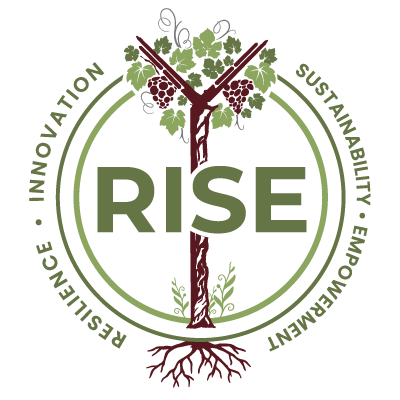Earlier this year at a dinner with many witnesses, I pledged to do something more to help fight climate change. I blame the Napa RISE organizers and the dinner hosts, JeanCharles Boisset and Gina Gallo, for this moment of clarity.
What I did afterward was start a personal research project. It’s on an aspect of wine production that has been identified as the biggest target wineries can aim at to reduce their carbon footprints and thus reduce the amount of climate-changing gases their operations are responsible for releasing into our ever-warmer atmosphere.
I began weighing all the 750 ml. bottles of wine that Napa and Sonoma wineries sent me to review in blind tastings once they were empty. What I’ve found so far is dramatic. Having weighed 709 wines since May, my data show the average weight is 660 grams or 1 lb. 7 ounces. That is not bad, compared to the heaviest bottles, which weighed almost twice that: more than 1,200 grams or nearing 2 lbs. 11 ounces.
But 660 grams is still a lot heavier than it needs to be. An impressive 102 bottles came in under 500 grams, showing that it’s feasible to use lightweight, climate-friendly bottles and not go out of business.
You May Also Like: How Sustainable is ‘Green’ Wine Packaging?
The featherweight champs included familiar names like Bouchaine, Gundlach Bundschu, Grgich Hills, Charles Krug, La Crema and Silverado, as well as boutique outfits like Joseph Jewell and Complant. Patent Sauvignon Blanc was the only bottle so far that clocked in under 400 grams.
The lightest bottles tended to carry the lightest types of wine—Sauvignon Blanc, rosé, one Vermentino. All the heaviest bottles, those over 1,000 grams, housed— no surprise—full-bodied and tannic Cabernet Sauvignons and Bordeaux-style red blends.
Those heavy bottles cost more for wineries to buy, more to ship out, put more physical demands on winery workers who schlep cases from the bottling line to stack on pallets, more effort for delivery drivers, sommeliers and store clerks, plus they don’t fit on many store shelves and wine racks.
Adding in the weight of the wine itself, a case of the heaviest Cabernet in my study weighs 51 lbs., while a case of lighter-weight bottles of Cabernet by a brand like Elizabeth Spencer or Greg Norman only weighs 32 lbs. The difference is vast.
And the difference represents vastly more fossil fuels to produce the heavier bottles, to ship the bottles to wineries and then from wineries to distributors when full. It makes a significant difference in a winery’s carbon footprint to go to lighter glass. This in turn means less carbon dioxide is being sent up into the sky, which goes toward slowing global warming and all the catastrophes it is already causing.
So why don’t more wineries go there? Are lighter bottles not available?
“Dozens of choices are available,” says Rich Bouwer, CEO of Free Flow Wines in Sonoma, a speaker at Napa RISE and a former winery and wine bottle company exec. “If you’re above 800 grams per bottle you are not trying. What it’s about is that brand position is more important than the carbon footprint.”
Take a Deeper Dive: Wineries Strive for Carbon Neutrality. Is It Enough?
A deep-seated misperception exists that a heavier bottle means a higher quality wine that deserves a higher price. Or does it? Marketing experts say that younger consumers value transparency, low-intervention practices, organic and sustainability credentials. Hefty glass would seem anathema to that.
“We’re going to teach the consumers that lighter weight is a good thing,” says Katie Leonardini at Whitehall Lane Winery in Napa Valley. “To be sustainable means having a smaller carbon footprint and that’s good for everyone.”
Of course, you don’t have to wait. I hope that the next time you pick up an especially heavy bottle in a wine shop or liquor store, your decision to buy or not to buy is carefully weighed.
This article originally appeared in the November 2023 issue of Wine Enthusiast magazine. Click here to subscribe today!



